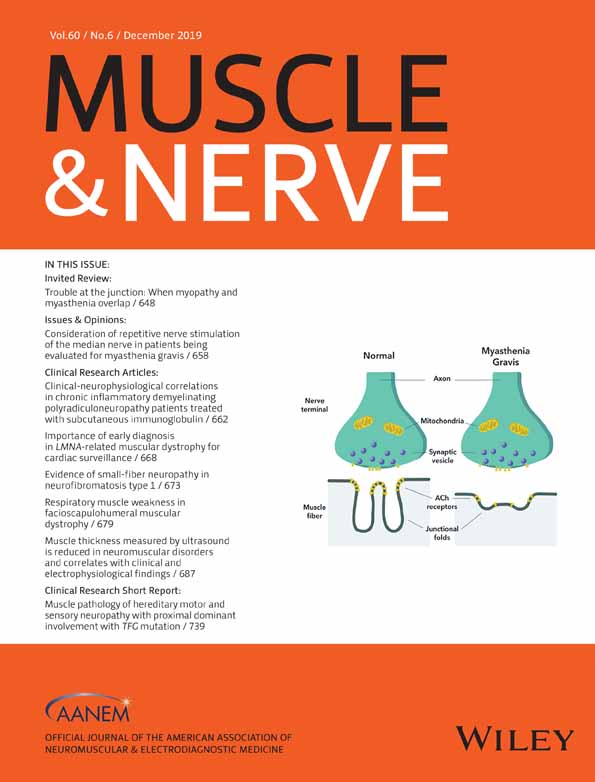Clinical and genetic characteristics of childhood-onset myotonic dystrophy
Abstract
Introduction
Myotonic dystrophy type 1 (DM1) is caused by a CTG (cytosine-thymine-guanine) trinucleotide repeat expansion. Congenital DM (CDM) presents in the first month of life, whereas individuals with infantile and juvenile DM1 have later onset of symptoms.
Methods
We performed a retrospective chart review of patients with childhood-onset DM1 seen at one of three locations in Dallas, Texas between 1990 and 2018. Symptoms, disease course, cognitive features, and family history were reviewed.
Results
Seventy-four patients were included; CDM was diagnosed in 52 patients. There was maternal inheritance in 74% of patients. CTG repeat number ranged from 143 to 2300. Neuropsychiatric and cognitive deficits were common. Over half of the patients had GI disturbances, and orthopedic complications were common.
Discussion
Myotonic dystrophy type 1 in children requires a multidisciplinary approach to management. Presenting symptoms vary, and repeat expansion size does not necessarily directly relate to severity of symptoms. A consensus for outcome measures is required.
CONFLICT OF INTEREST
None of the authors have any conflicts of interest to disclose.




